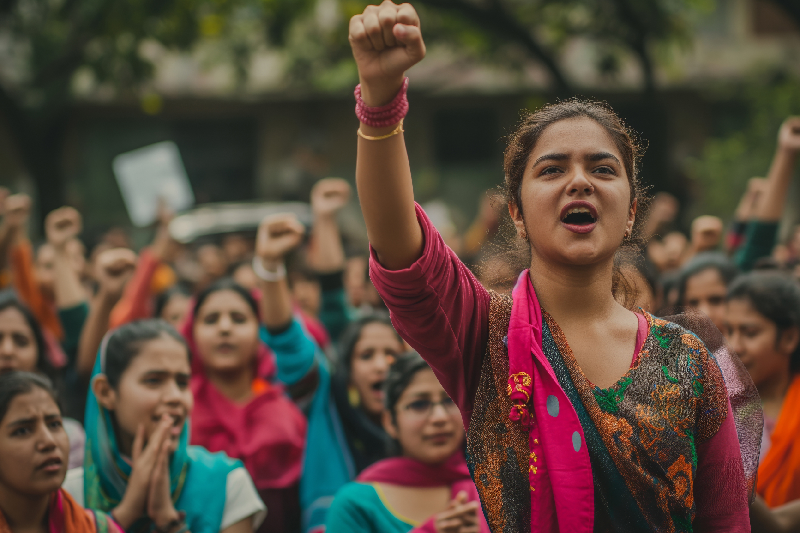
Transgender Student Enrolment Sees Steady Rise Across India, Led by Uttar Pradesh and Bihar
India is witnessing a slow but significant transformation in the inclusion of transgender individuals in formal education. According to fresh data released by the Ministry of Education and presented in the Rajya Sabha, transgender student enrolment in schools and higher education institutions has seen a substantial rise over the last three years. While this signals progress, it also underscores the need for sustained policy action, social support, and institutional inclusivity to ensure retention and success.
Six-Fold Increase in School Enrolment
Between 2021–22 and 2023–24, the number of transgender students enrolled in schools across India increased from 155 to 965, marking a more than six-fold growth. This data was shared in response to a query by MP Swati Maliwal, reflecting the growing visibility and inclusion of transgender students in India's education system.
Among the states, Uttar Pradesh and Bihar emerged as the top performers:
- Uttar Pradesh: 327 transgender students in 2023–24 (up from 239 in 2022–23 and 16 in 2021–22)
- Bihar: 282 in 2023–24 (up from just 4 in 2021–22)
This impressive growth from two of India’s most populous states suggests strong regional-level outreach, increased social acceptance, or improvements in data reporting and identity recognition in schools.
Other states that showed notable growth in school enrolments include:
- Karnataka: 39 students in 2023–24
- Jharkhand: 27 students in 2023–24
- Punjab: 15 students in 2023–24
States Where Numbers Declined
However, not all states followed this upward trend. A few showed declining or stagnant numbers:
- Rajasthan: Dropped from 107 in 2021–22 to 77 in 2023–24
- West Bengal: Fell from 211 in 2022–23 to just 62 in 2023–24
- Andhra Pradesh: Enrolment reduced from 132 in 2022–23 to 31 in 2023–24
These declines raise important questions about data consistency, policy continuity, and socio-political environments that may be discouraging transgender students from accessing or remaining in the education system.
Several Union Territories and northeastern states such as Nagaland, Ladakh, Lakshadweep, Andaman & Nicobar Islands, and Delhi reported no transgender student enrolments across the three years, indicating either a lack of access, underreporting, or the absence of gender-inclusive frameworks in schools.
Growth in Higher Education: From 302 to 1,448 Students
In higher education, the trend is similarly encouraging. As per provisional data from the All India Survey on Higher Education (AISHE), the number of transgender students in universities and colleges rose from 302 in 2020–21 to 1,448 in 2022–23, nearly a five-fold increase.
State-wise highlights for 2022–23 include:
- Uttar Pradesh: 369 students (up from 30 in 2020–21)
- Maharashtra: 158 students
- Madhya Pradesh: 124 students
- Telangana: 104 students
- Tamil Nadu: 98 students
- Rajasthan: 101 students
- Karnataka: 73 students
States like Kerala, Delhi, and Gujarat also reported steady growth, while regions such as Nagaland and Puducherry continued to reflect minimal numbers.
What This Growth Tells Us
The numbers paint a cautiously optimistic picture. More transgender students are now able to enroll in both school and university systems than ever before. However, this rise in enrolment must be viewed in context:
- Low Baseline: The growth is impressive, but the absolute numbers remain extremely low given India’s vast student population.
- Retention & Safety: Enrolment is only the first step. Without anti-discrimination policies, inclusive facilities, and mental health support, dropout rates can remain high.
- Regional Gaps: Some states have made significant progress, while others show stagnation or decline, highlighting the need for localized strategies.
- Awareness & Identity Recognition: The increase may also reflect greater willingness to self-identify as transgender due to growing awareness and policy support, not just changes in access.
The Road Ahead: From Enrolment to Empowerment
To ensure that this upward trajectory continues and translates into meaningful educational experiences for transgender students, several actions are essential:
- Inclusive Infrastructure: Gender-neutral restrooms, inclusive curricula, and sensitized teaching staff can make a big difference.
- Scholarships & Financial Aid: Targeted support can reduce economic barriers to education.
- Anti-Bullying Policies: Safe spaces are crucial, especially for transgender youth who face higher risks of abuse and dropout.
- Community Engagement: Families and local communities must be involved in destigmatizing trans identities from early stages.
- Data Collection and Monitoring: States must improve tracking and reporting to ensure transgender students are accurately represented and supported.
Conclusion
India is beginning to take tangible steps toward educational inclusion of transgender individuals, with enrolment numbers steadily rising in both school and higher education sectors. While Uttar Pradesh and Bihar are leading this change numerically, the momentum must be sustained and broadened across all states.
This progress should be seen as a starting point, not a milestone. True inclusion lies not just in numbers, but in creating a system where transgender students can thrive with dignity, equity, and respect.



